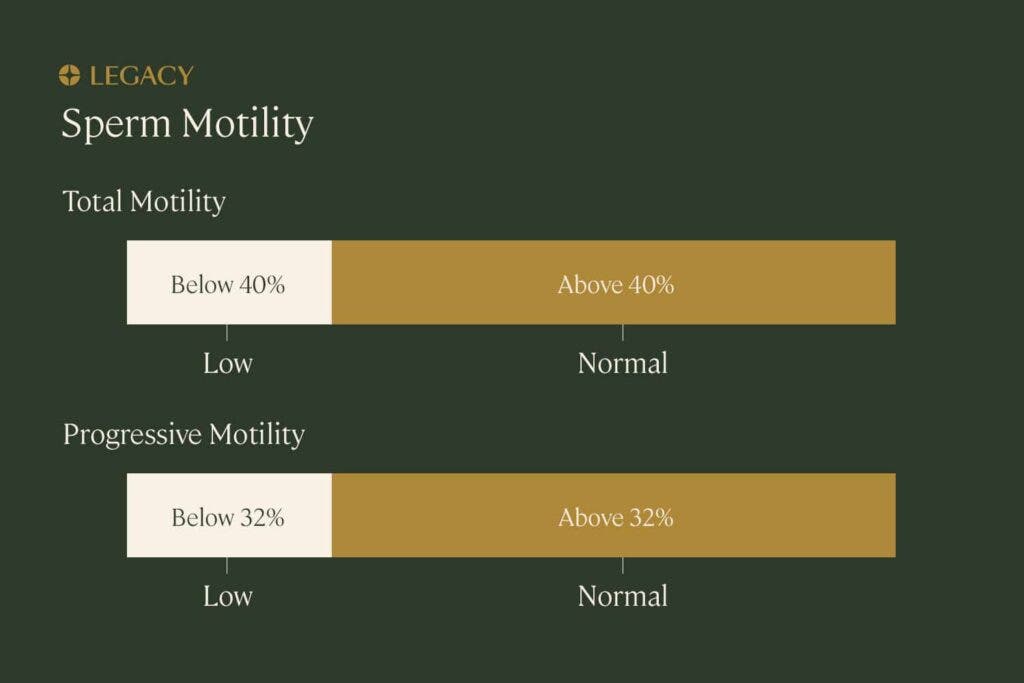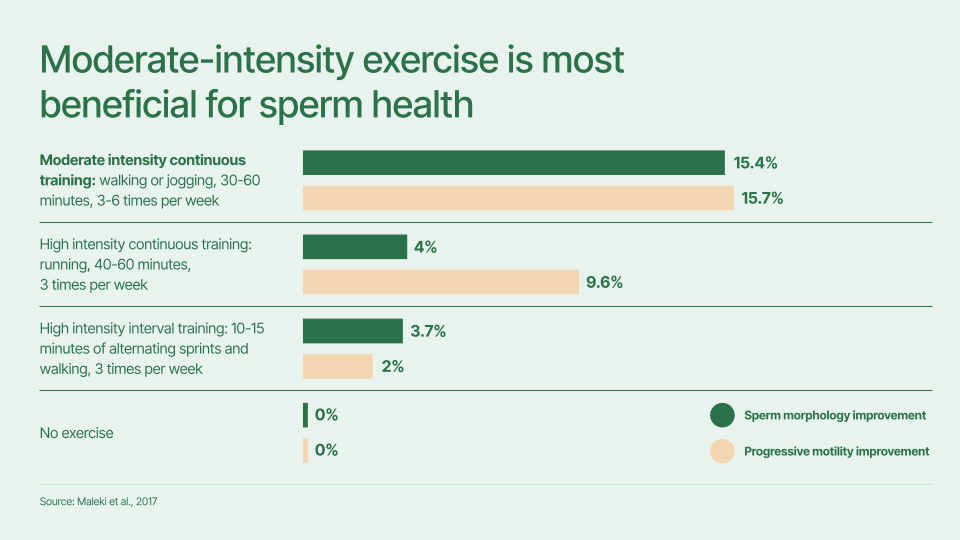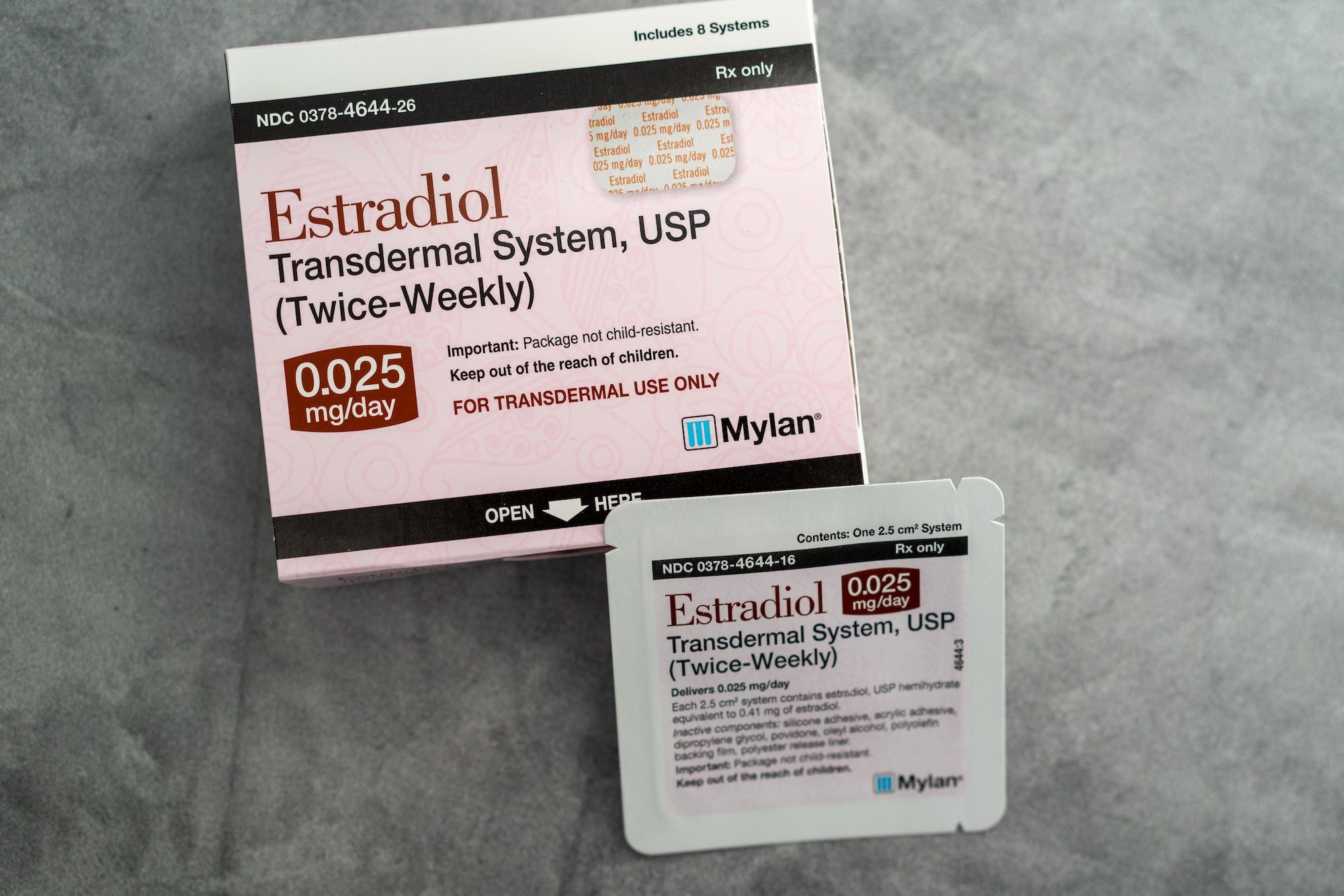You probably already know that aspects of your sperm health, like their count and shape, affect your fertility. Another essential factor is your sperm movement, also known as motility. So, what is normal sperm motility and how does it affect your ability to conceive a child?
Key takeaways
- Sperm motility or movement, along with other factors of your sperm health, are critical for fertility. This is because sperm must move effectively in order to reach and fertilize the egg.
- Sperm motility may be affected by environmental and health factors, as well as medical treatments.
- You can measure your sperm motility using a semen analysis, which can help you understand your sperm parameters and areas needing improvement.
- Assisted reproductive technology may help you conceive even if you have low sperm motility.
Why is sperm motility important?
Sperm motility is the ability of sperm to move or “swim.” Motility is measured in the percentage of total sperm that are moving. So, if you have 30% motility, that means approximately 30% of the sperm in your ejaculate sample are moving.
Sperm must move around 19 cm through the female reproductive tract in order to reach and fertilize an egg.1 A higher number of healthy, moving sperm means an increased chance of achieving a pregnancy.
We’ll discuss the importance of moving sperm, how sperm motility is measured, and how to improve sperm motility to increase your fertility.
Because of the necessity of the sperm propelling themselves effectively to reach the egg, sperm motility is an essential factor when assessing fertility.

What is a normal range for sperm motility?
According to the World Health Organization, standard semen characteristics include over 32% of sperm showing progressive motility (forward motion) or over 40% of sperm showing total motility (any movement, whether progressive or non-progressive).2 Sperm that aren’t moving are referred to as immotile, and immotile sperm may sometimes appear in ejaculate.
These types of movements aren’t created equal when it comes to fertility, so it’s important to differentiate between them. Progressive sperm motility means that sperm are moving in straight lines or wide circles, so they’re more likely to move toward the egg.
On the other hand, with non-progressive motility, sperm may move in small circles or vibrate without moving forward, making them less likely to reach the egg even though they’re technically in motion. The speed at which the sperm are moving is also taken into account, with rapid progressive motility defined as forward motion of at least 25 μm/s and non-progressive motility as under 5 μm/s.3
Studies have found that having more sperm you have that show progressive motility correlates with a greater chance of conceiving a child.
How to measure sperm motility
Sperm motility is one factor that’s evaluated in a semen analysis. It may be assessed manually through a microscope or by using a computer-aided sperm analysis (CASA) system to look for movement patterns.
You can easily get your sperm tested with an at-home semen analysis from Legacy, which will reveal factors about your reproductive health including your semen volume and your sperm motility, count, and morphology (shape). While a semen analysis won’t definitively tell you whether you’re fertile or infertile, it will give you helpful insights into key components that affect your ability to conceive a child.
What is asthenozoospermia?
Asthenozoospermia is defined as poor sperm motility — less than 40% of sperm are moving, or less than 32% of sperm are moving progressively. Low sperm motility can be caused by genetic abnormalities, lifestyle habits, or exposure to harmful substances, among other factors.
Low sperm motility is a fairly common condition. But complete asthenozoospermia, the term for when 100% of sperm are immotile, is very rare — approximately 1 in 5,000 men will experience complete asthenozoospermia.4
Factors that impact sperm motility
Sperm motility may be affected by lifestyle factors, health issues, and medical treatments.

Lifestyle factors that may affect sperm motility
- Drinking alcohol: Alcohol intake appears to be linked to reduced sperm motility.5
- Smoking cigarettes: Frequent smoking has been associated with worse semen quality, including decreased sperm motility.6
- Getting too little sleep: Research has found that going to bed late and getting less sleep was related to lower sperm motility.7
- Over-exercising: While physical activity may benefit sperm in general, studies show that intense training may be associated with reduced sperm motility and other semen parameters.8
- Using recreational drugs: Drugs like marijuana are linked to lower sperm motility.9
- Being exposed to high temperatures: Activities like taking saunas and cycling increase scrotal heating, which harms semen quality and sperm motility.
- Being exposed to environmental pollutants: Chemicals in the environment, including pesticides and heavy metals, may have a negative impact on sperm motility.
Health factors affecting sperm motility
- Varicocele: These enlarged veins in the scrotum are linked to poor semen quality, including reduced sperm motility.
- Genetic abnormalities: In some cases, genetic disorders like Kartagener syndrome may lead to poor sperm motility.
- Antisperm antibodies: Around 6–11% of men with infertility have antisperm antibodies, which cause the immune system to see sperm as harmful and destroy them. The antibodies also reduce sperm motility.
- Long periods of abstinence: Avoiding sex and ejaculation for a long time, particularly more than a week, appears to harm sperm parameters including motility. Learn more about how often to have sex when you’re trying to conceive.
- Obesity: Research indicates that having a higher BMI is linked to reduced semen quality, including motility.10
Some medications may also impact sperm motility, such as:
- Chemotherapy drugs
- Antipsychotic drugs, like chlorpromazine (Thorazine) and trifluoperazine (Stelazine)
- Antiepileptic medications, like phenytoin (Phenytek) and carbamazepine (Equetro)
- High doses of acetaminophen (Tylenol)
- Moderate doses of aspirin

How to improve your sperm motility
If you’re looking to improve your sperm motility or other areas affecting your fertility, it’s best to start with a semen analysis to help you understand your baseline sperm health. Then, you’ll know which areas to focus on for improvement.
Just as certain factors can reduce your sperm motility, you may be able to take steps to address the cause of decreased motility and boost your sperm health. These steps include:
- avoiding or limiting alcohol
- if you smoke, quitting
- maintaining a healthy weight
- following a healthy diet
- getting enough sleep
- exercising regularly
- reducing your stress levels
- taking male fertility supplements
Learn more about lifestyle changes to improve your sperm motility in our Guide to Sperm Improvement.
Treatment options if you are trying to conceive with low sperm motility
Assisted reproductive technology (ART) may help you conceive if you have low sperm motility or other sperm quality issues. The type of procedure that will work best depends in part on the health of your sperm.
If you’re able to produce 5 million motile sperm in your ejaculate, intrauterine insemination (IUI) may be effective.1 In this procedure, sperm are collected and concentrated, then placed in the uterus during the ovulation (fertile) window. Putting healthy sperm near the egg helps increase the chances of pregnancy.
Learn more about IUI — what is it, and who’s a good candidate?
In vitro fertilization (IVF) may be a better option for those with between 2 and 5 million motile sperm (with at least 15% progressive sperm motility) in their ejaculate.1 This procedure, which is more invasive than IUI, involves retrieving eggs from the ovaries and then placing them with sperm in a lab dish. Once the sperm has fertilized the egg, the newly formed embryo is placed in the uterus. Pregnancy then happens if the embryo implants itself in the uterus lining.
Learn more about IUI vs IVF.
Finally, intracytoplasmic sperm injection (ICSI) is an additional step in the IVF process that may be recommended if you have less than 2 million motile sperm or if they have poor progressive motility. With ICSI, sperm are injected directly into the egg to aid fertilization and, hopefully, lead to a pregnancy.
References
- 2. Sunder et al, “Semen Analysis.” 2022.
- 3. Vasan, “Semen analysis and sperm function tests: How much to test?” 2011.
- 4. Castañeda et al, Encyclopedia of Reproduction (Second Edition). 2018.
- 5. Silva et al, “Study on the short-term effects of increased alcohol and cigarette consumption in healthy young men’s seminal quality.” 2017.
- 6. Mostafa et al, “The effect of cigarette smoking on human seminal parameters, sperm chromatin structure and condensation.” 2018.
- 7. Liu et al, “Sleep Deprivation and Late Bedtime Impair Sperm Health Through Increasing Antisperm Antibody Production: A Prospective Study of 981 Healthy Men.” 2017.
- 8. Jóźków et al, “The Impact of Intense Exercise on Semen Quality.” 2016.
- 9. du Plessis et al, “Marijuana, phytocannabinoids, the endocannabinoid system, and male fertility.” 2015.
- 10. Belloc et al, “High body mass index has a deleterious effect on semen parameters except morphology: results from a large cohort study.” 2014.



